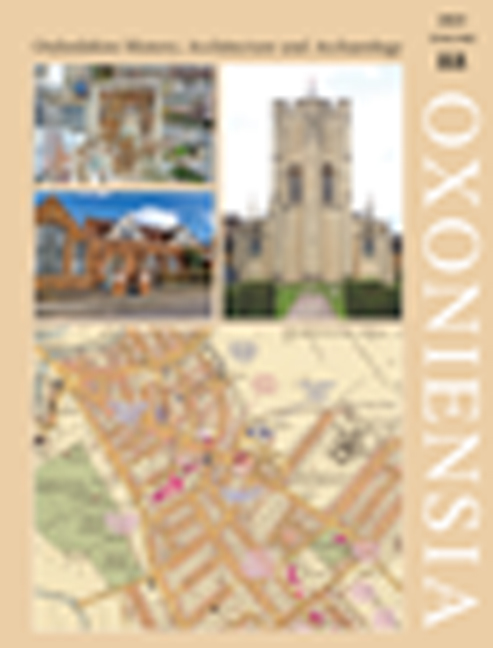Nina Morgan and Philip Powell, A Story in Stone: The Geology of the Oxford University Museum of Natural History Building
Published online by Cambridge University Press: 15 May 2024
Summary
This generously illustrated book is the work of two geologists who previously produced The Geology of Oxford Gravestones (reviewed in Oxoniensia, vol. 81, 2016, pp. 263–4). It describes the enormous range of stones which were utilised in the structure of the Oxford University Museum of Natural History, particularly those chosen for its striking internal columns which from the outset were designed to serve as a lesson in geology. The building’s foundation stone was laid in 1855, and the museum opened to the public (as the University Museum) in 1860. There was initially insufficient money to carve the columns’ capitals, and this work was not completed until 1912. Numerous dignitaries had proffered suggestions about the museum’s design, and as the authors point out these had been ‘carefully considered and endlessly discussed by a sub-Delegacy’ of the university.
In order to draw attention to the significance of the carefully selected stones for the columns, John Phillips, who became reader in geology at Oxford in 1856 and keeper of the new museum in 1857, produced a booklet that included a description of each column (sixty-three in all), classification of the stone type and its source (published in 1863). Morgan and Powell have revisited and updated Phillips’ list and have provided high-quality images for each column, one showing the whole column and another showing a close-up detail. The photographs are accompanied by a detailed description of the nature of each stone, together with helpful information about how the rock-type was formed.
An informative work such as this study inevitably raises questions about the mechanism by which an amazing representative assemblage of rocks was gathered, originating as they did from locations in Scotland, Ireland and many areas of England – among them, Land’s End. In some cases it appears that direct contact with quarry managers was involved, but in others the participation of an intermediary may be presumed, such as a dealer in masonry. Then of course there is the question of transport. By the 1850s railways were available, and traction engines were also becoming widespread. Coastal shipping, canals and rivers (including the Thames) could also be employed, as well as horse and cart. Study of relevant minutes might yet illuminate this aspect of the museum’s construction.
Use of this publication will enhance and deepen visits to the museum.
- Type
- Chapter
- Information
- Oxoniensia 88 , pp. 386 - 387Publisher: Boydell & BrewerFirst published in: 2024



